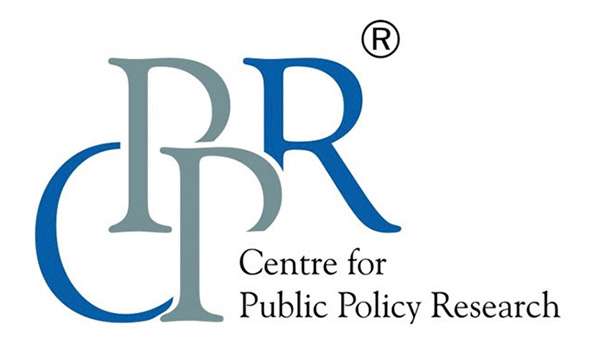From the blog

EP 51 | Shaping Regional Security and Cooperation: An Analysis of the 2023 SCO Summit | #PolicyBeyondPolitics
July 10, 2023
Land Titles to Slum Dwellers: A Solution to the Affordable Housing Crisis?
July 11, 2023Bicycles: Is it an Alternative Mode of Transport in Contemporary Indian Cities? Discussion Around Challenges and Factors to Be Considered

In the fast-moving world and ever-changing climate conditions in the world, the push for bicycles as an alternative or a complementary mode of mobility is increasing day by day. There are multiple factors and discussions that should be taken into consideration before promoting bicycles as an alternative or complementary mode of mobility.
The use of bicycles could be broadly divided into two, as a livelihood dependent and as a recreational activity. There is a large section of working-class people who use bicycles as the only mode of transportation for their livelihood purpose on a daily basis. According to the 2011 Census, in Delhi alone, 11 percent of the working population cycles to work and 36 percent of households own bicycles. Their economic and social conditions in the high-cost urban environment do not give them any other options to choose from. The use of bicycles for recreational purposes and for fitness purposes constitutes the other section of people using bicycles.
The imagination of an urban area and its development plays an important role in determining the mobility of people. Contemporary solutions in urban mobility are imagined and planned towards the construction of bridges, bye passes and other road planning initiatives which are more adaptive by motor vehicles. There is a consistent decrease in bicycle ridership over the years in different cities. For example in Chennai, there has been a steady decline in the modal share of cyclists and pedestrians from 41% in the 1970 study, 40% in the 1984 study and 34% in 2008 to 28% in 2018. The decrease in ridership has been caused by various reasons- lack of safety, lack of infrastructure, car/motor vehicle driven planning, climate conditions of the cities and various other reasons. The prevalence of road accidents is very common in the city of Chennai. The city encounters more than 10,000 accidents per year. The coverage of the sidewalk and cycle lanes stand at 17.03 and 0.26 percent, respectively, which again explains how unsafe it is for pedestrians and cyclists. This is an indicator to describe the bad safety conditions for cyclists and pedestrians in the city.
The cities in the country are rapidly becoming more and more congested. According to the TomTom Traffic Index study, Bengaluru is the second most traffic-congested city in the world where it took 29 minutes 10 seconds to travel 10 km in the year 2022. The congestion on the road tells about the number of vehicles on the road which increases safety concerns about using bicycles as the means of transport. The rapid increase in congestion and increase in pollution levels leave us or guide us towards the solution of non-motorised transport modes. But India did not have a specific policy until 2006 towards this and the implementation of the Non-Motorised Transport Policy in 2006 did not yield satisfactory results across cities. The lack of integrated multimodal design in urban mobility did not help the policy to be implemented at a large scale. The investments by the state governments were highly concentrated on bridges and other infrastructures. Figure 1 below clearly explains where the state has been concentrating over the period of time even after the NMT policy, 2006.
Figure 1: Allocation of Capital Expenditure in the Transport Sector in Four Indian Cities in Percent

Source: NMT Investment and Infrastructure Report, National Transport Development Policy Committee (NTDPC) Final Report 2013
India is a tropical country, and the increase in temperature and changing weather conditions lead to difficulty in considering bicycles as an alternative mode of transport. Cities are one of the main contributors to the carbon emission, cities are also affected by climate change considerably. The recently released Global Climate Risk Index 2021 ranks India as the 7th most-affected country by climate-related extreme weather events (storms, floods, heat waves etc.).
During Covid, the Indian government initiated the non-motor transport programme called India Cycles4Change, a program in June 2020 where cities were encouraged to promote cycling-friendly initiatives. Apart from this initiative, there are various other initiatives like Raahgiri Day-2013 in Gurgaon, and the Public Bicycle System (PBS) which was launched in different cities like Mysore, Kochi, Bhopal and other three cities. All these initiatives are facing difficulties in financial viability and very less financial allocation. The infrastructural and operational cost involved in this implementation is huge. The estimated cost per cycle amounts to Rs. 54,000 and Rs. 77,000 per cycle in Pune and Ahmedabad respectively. This cost includes IT components, stations, cycles, the control centre and other capital expenditure. There are other operational costs involved which include administrative and maintenance costs. In Pune, the estimated cost for operations amounts to Rs. 24,000 per cycle which includes personnel costs.
Before promoting bicycles as an alternative mode of transportation, it is crucial to consider multiple factors. These include safety, urban space and infrastructure design, high congestion, extreme weather conditions, geographical location and terrain, as well as financial costs and budget allocation. It is essential to account for these factors in the planning and promotion of bicycles. Simply initiating plans or schemes without a detailed understanding of commuting patterns, appropriate land-use planning, and a move towards multi-modal integration would not effectively facilitate the use of bicycles on roads.
Arvind Karthick, Research Associate, CPPR
Views expressed by the author are personal and need not reflect or represent the views of the Centre for Public Policy Research.

